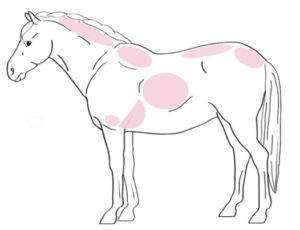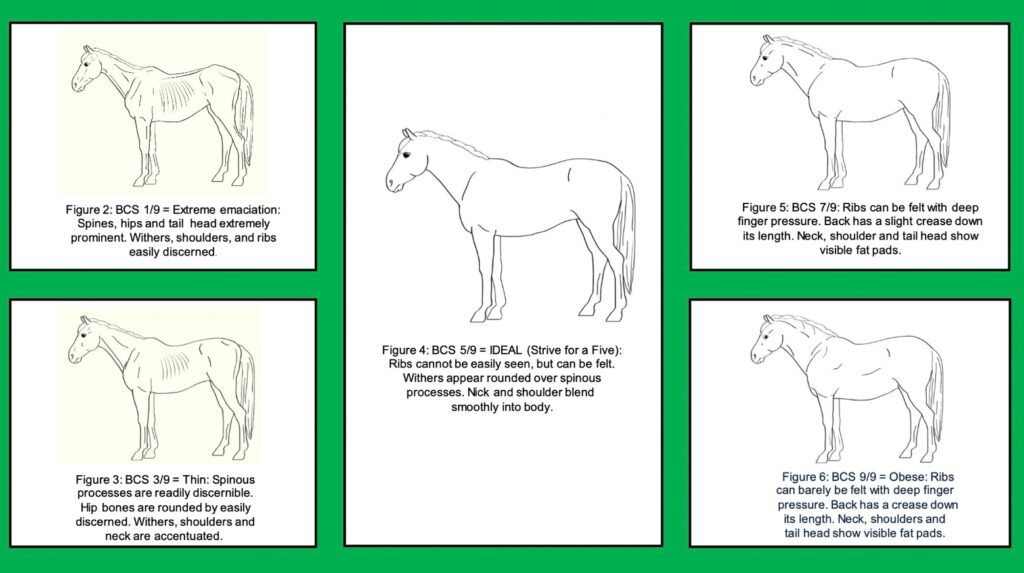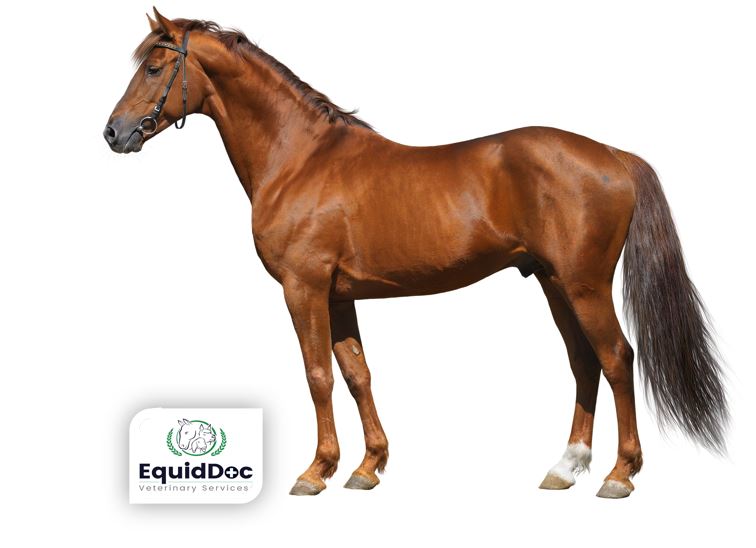Weight monitoring and management can be challenging due to the daily routine of seeing your horse, especially when they are blanketed or have a thick winter coat. Your veterinarian hopefully has the benefit of seeing your horse only a few times per year, so those small incremental daily changes are more noticeable to them.

What does body condition score mean?
The Henneke body condition score, also known as BCS, was created as a relative assessment of weight. The body condition score’s scale runs from one through nine, where 1 is emaciated (Fig. 2), 9 is obese (Fig.6) and 5 is ideal (Fig. 4).
What parts of the horse contribute to a BCS score?
There are specific body regions closely assessed for body condition scoring and include the crest, topline, shoulder (heart girth region), rib cover, croup, and tail head (Fig. 1). Although we say “strive for a five” for BCS, we know that it is healthier for your horses to be a little underweight than a little overweight. A four out of nine score is healthier than a six out of nine score.
What is the importance of body condition scoring?
Some breeds are predisposed to endocrine conditions such as insulin dysregulation making concurrent obesity increasingly dangerous for the risk of laminitis. In addition, carrying excess weight increases the strain on your horse’s joints, tendons, and ligaments which can predispose them to injury or arthritis.

So, as your horse’s winter blankets are removed, let’s review what you might find hiding underneath, and get you ready for your horse’s annual exam! Call EquidDoc Veterinary Services (508-885-4205) or email office@equiddocvet.com to schedule your horse’s annual exam and vaccination appointment!

